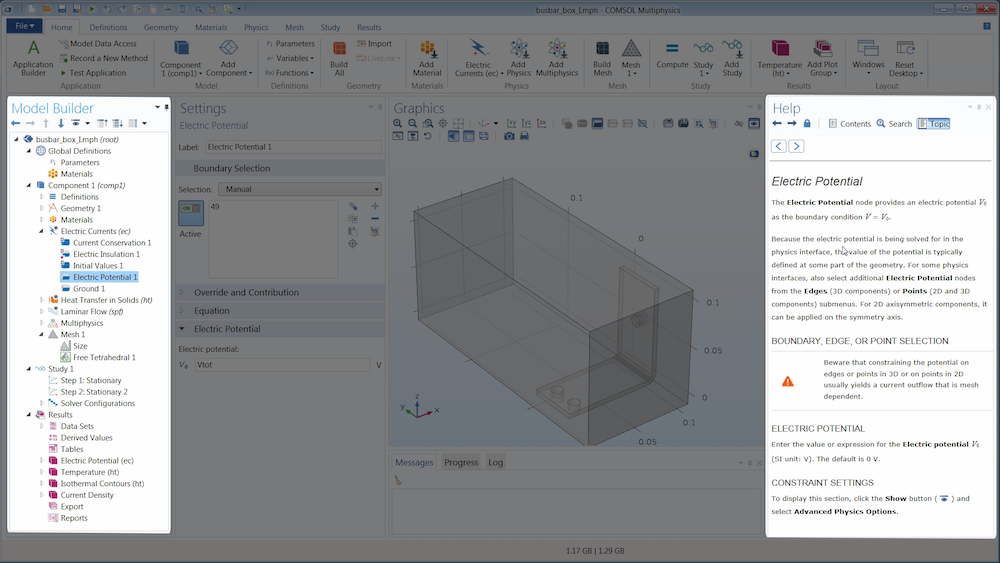

Set the name of the assembly in the Inspector.Īn Assembly Definition is a type of Unity Asset. After compilation, the assembly contains all the scripts in the folder and its subfolders (unless the subfolders have their own Assembly Definitions).
#Form 3d assembly comsol 5.1 how to#
Note: You can find out where Unity compiles a particular C# file by selecting the script file in the Project window and looking at the Assembly Information listing in the Inspector: A script in the Assembly-CSharp-Editor.dll predefined assembly How to use Assembly DefinitionsĪdd Assembly Definition Assets to folders in a Unity Project in order to define an assembly.
#Form 3d assembly comsol 5.1 code#
Similarly, if code in Stuff.dll changes, Unity only needs to recompile Main.dll and Stuff.dll, not ThirdParty.dll or Library.dll. And since Main.dll contains fewer scripts, it compiles faster than Assembly-CSharp.dll. As a result, Unity doesn’t need to recompile any of the other assemblies because of a change to code in Main.dll. Stuff.dll depends on Library.dll, and so on. The Main.dll assembly depends on Stuff.dll and ThirdParty.dll. The above example shows a project divided up into five separate assemblies instead.

The following figure illustrates a Project split into several assemblies: Predefined versus manually defined assembliesīy default, Unity compiles almost all project scripts into the Assembly-CSharp.dll managed assembly. Otherwise, when you change scripts in one of the predefined assemblies, Unity must still recompile all the code in your project, since the predefined assemblies automatically depend upon any assemblies you create using an Assembly Definition. Note: Although not strictly required, Unity recommends that whenever you use Assembly Definitions in a project, you do so for all of the code in your project. This means that the length of time between making a code change and seeing that change in action grows longer as you add more scripts to the project. Unity must recompile every script in the entire project when you change any script. Without Assembly Definitions, Unity compiles any C# scripts in your project into one of the predefined, managed assemblies. Assembly Definitions can also help you manage dependencies in projects containing platform and Unity-version-specific code. When you separate your code into assemblies having well-defined dependencies, Unity reduces compilation time by only rebuilding the dependent assemblies when you make a change to a script. See Assembly Definition File format for information about the JSON syntax. You can also edit the JSON directly using an external editor. See in Glossary window by selecting the asset file. You can set these properties in a Unity Inspector A Unity window that displays information about the currently selected GameObject, Asset or Project Settings, alowing you to inspect and edit the values. (Scripts in subfolders are included unless the subfolder has its own Assembly Definition.) You can think of each of these managed assemblies as a single library within your Unity Project.Īn Assembly Definition Asset is a text file, with a file extension of “.asmdef”, that contains a JSON string defining the Assembly Definition properties. When you create an Assembly Definition Asset in a folder, Unity compiles a separate managed assembly from all the scripts in that folder. See in Glossary in your project into assemblies. Create Assembly Definitions to organize the scripts A piece of code that allows you to create your own Components, trigger game events, modify Component properties over time and respond to user input in any way you like.


 0 kommentar(er)
0 kommentar(er)
